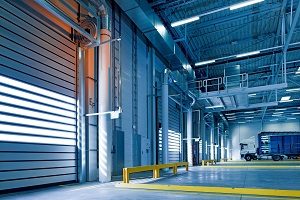
Environmental Insurance for Warehouse Facilities
Warehouse facilities have the potential for serious pollution exposures due to the size of the facilities and the amount of goods typically stored on-site at any given time. Problems could arise from various operational activities, including a warehouse worker accidentally puncturing a storage drum with a forklift, or something as simple as dust being kicked up by vehicles entering or leaving the area.
It is crucial that warehouse owners and operators have the right insurance coverage.
Environmental exposures associated with warehouse facilities
Pollution exposures may include, but are not limited to:
Storage
The overall storage of goods which may be considered a contaminant. If the containers that hold these substances leak or spill, this could cause an environmental loss.
Operations
The risk of an environmental claim as a result of transporting, loading, or unloading goods on the warehouse premises.
Waste
Spills or leaks from drums, old containers, refuse dumpsters, or other types of waste found outside the facility.
Fires, Floods, and Other Natural Disasters
Contamination caused by the contents stored at a warehouse facility catching on fire, or being ruined in a flood, hurricane, or other uncontrollable event.
Environmental insurance for Warehouse Facilities
In response to these environmental exposures, warehouse facilities should purchase aSite Specific Pollution (EIL) policy which can provide coverage for both on-site and off-site clean up, defense costs, and third party bodily injury, and property damage claims. Coverage is claims made and can be modified to cover only new conditions occurring from policy inception onward, unknown pre-existing conditions, or both. It can also be constructed to apply to only On Site Bodily Injury, Property Damage, and Clean Up, or only Offsite, or both. Available product enhancements include first and third party Transportation Pollution Liability, Natural Resources Damages, coverage for scheduled storage tank systems, Mold coverage, Extended Reporting Periods, and coverage for non-owned waste disposal sites. Coverage starts at just $3,000.
Check out some claim scenarios involving warehouses:
A warehousepackaged chloroform in 55-gallon drums. Specifications indicated that all drums should have Teflon or compressed asbestos gaskets. The warehouse used Teflon gaskets, which contained rubber flanges. The flanges deteriorated when exposed to chloroform, which resulted in spills after the drums were delivered to clients. Claims for bodily injury, business interruption, expenses to re-drum containers and cleanup costs exceeded $1,000,000.
A warehousing facility operated an underground storage tank that was integrity tested annually. The previous year, a slight leak in the tank was detected. It was removed and a small amount of soil was excavated. The tank was given a clean closure status from the state. A short time later, an adjacent gas station discovered that its UST’s were leaking into soil and ground water and claimed the warehouse UST was also responsible for the contamination. The warehouse hired consultants to do further investigation and counsel to defend the claims. These professional fees amounted to $250,000.
A release of ammonia at afood storage warehouse adjacent to an ice cream manufacturer caused an evacuation of neighbors and businesses for over six hours. Several residents filed claims for nausea and several businesses filed business interruption claims. Total claims exceeded $110,000.
A fire broke out in a used drum storage warehouse located in the middle of an industrial park. Other industrial park tenants were evacuated as a result of the fire, and release of fumes from the solvents that remained in the drums and cleaning agents stored nearby. Adjacent businesses filed claims for contingent business loss resulting from the release of air pollutants. In addition, neighbors filed claims against the drum storage company for illnesses attributable to the fire. Bodily injury and contingent business loss claims amounted to $185,000.
A warehouse utilizing an on-site septic system experienced periodic chemical and contaminant spills when floors were hosed down and the washwater entered the system. After some time, samples from neighboring residential wells showed that contamination originated at the warehouse location. Soil and groundwater cleanup costs exceeded $365,000.
A fire erupted at a warehouse housing a variety of materials. Flames spread to the hazardous areas sending dangerous vapors throughout the adjacent community and hazardous liquids into the surrounding soils. The fire department’s hazardous materials team had to control the extent of contamination. Hundreds of community members filed a class action suit, citing health problems from inhalation of toxic vapors and property damage from hazardous firewater runoff. The state regulatory agency and the EPA determined that the site and surrounding properties must be cleaned up, resulting in expensive remediation costs. The total costs for citizen suits and remediation topped $545,000.
During material handling operations, a forklift operator accidentally pierced a drum of toluene stored in an uncontained area of the warehouse. The toluene first entered a nearby floor drain which was connected to the sanitary sewer and then the municipal treatment plant. The plant’s effectiveness was impeded temporarily. Once the toluene was traced back to the warehouse operation, the treatment plant filed a claim for cleanup costs that totaled $53,000.
For more information on insurance coverage for warehouse facilities, please contact us.
Type: Blog
Topic: Warehouses